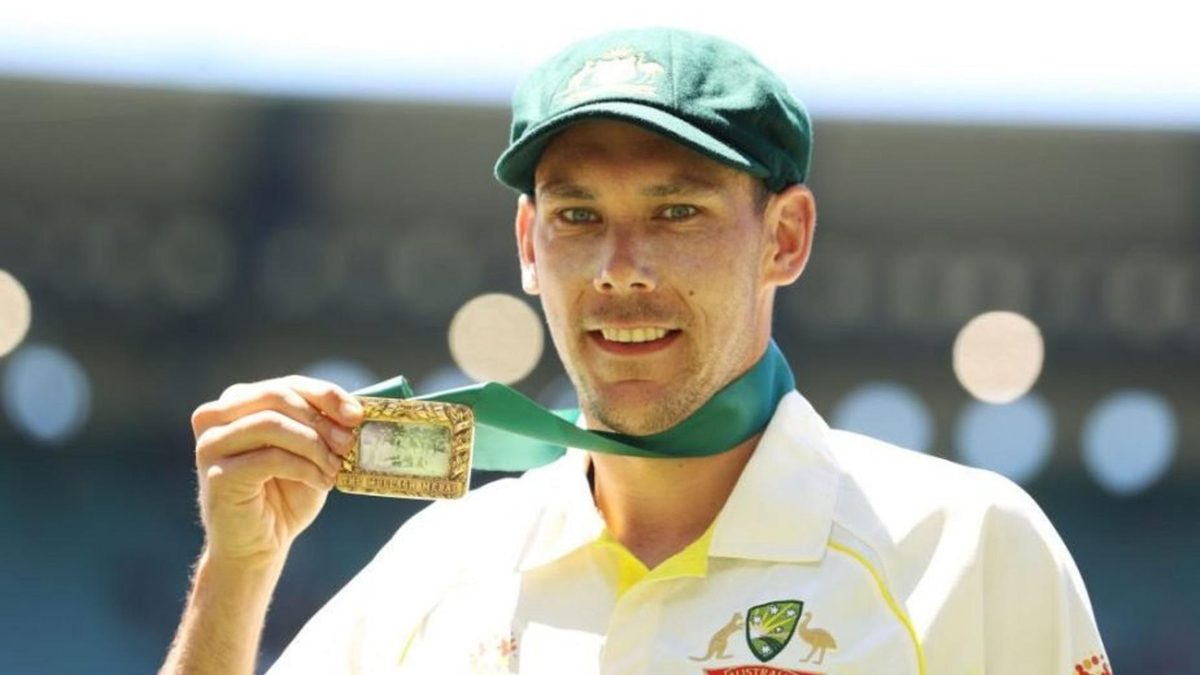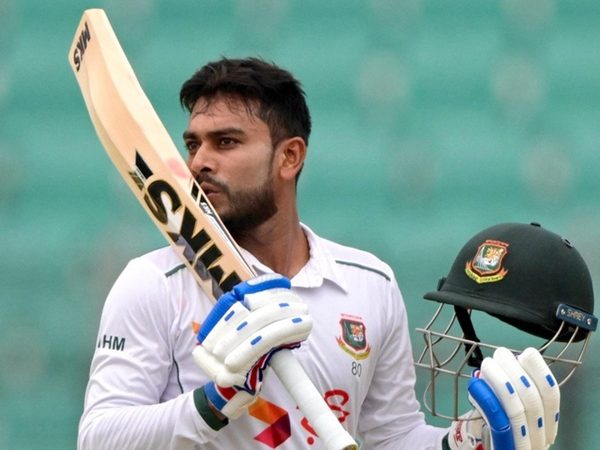
Scott Boland speaks to Taha Hashim about his long road to the top, that spell for the ages and what comes next.
There’s only one place to start: the Boxing Day Test at the ‘G. England have collapsed (again) and are up against it at the start of day three: 31-4 in their second innings and still trailing by 51. Mitchell Starc takes the ball alongside Pat Cummins to kick things off and the man on debut, 32-year-old Victorian Scott Boland, is awaiting his go. He bowled one over the previous evening and had the crowd, his crowd, roaring after taking two wickets in the space of three deliveries.
“I remember standing down at fine-leg and Stokes hit a couple of nice drives off Starcy for four,” Boland says. “And I was thinking, ‘Oh jeez, it might be a pretty long day’.” It’ll be the one thing Boland gets wrong that session. Just moments later, Starc bowls Stokes. When Boland replaces the left-armer a few overs later, England are 56-5 after 22 overs.
Carnage ensues. Jonny Bairstow is dropped by Cameron Green at gully off Boland’s first delivery, but the right-arm quick soon pins his man lbw. From his next over, he nabs the big one, Joe Root, with a flashy drive gifting an edge to first slip. “I tried to make the ball go away from Root and then that happened.” Then Mark Wood. “Got a caught and bowled off Wood, which he hit back pretty firmly. And that stuck.” Then Ollie Robinson. “It was just one of those days where everything you try goes right.”
With unerring accuracy, a bit of nip and some English assistance, Boland has figures of 6-7 from four overs. Green goes on to take the wicket that retains the Ashes, but this is Boland’s hour, day and match. With 11 more wickets to come across the next two Tests, bringing his bowling average to a scarcely believable 9.55, it’ll be an astonishing series too.
But let’s just go back for a moment, because to understand the magic, you’ve got to understand the decades that built up to the crescendo.
Boland was no prodigy. Not like Cummins, Starc or Josh Hazlewood, all of whom had debuted for Australia before they’d turned 21. Boland had to wait until he was 22 to make his state debut for Victoria. “Up till [the age of] 18, I was more of a batter who sort of bowled a little bit,” Boland tells Wisden.com in Pakistan, where he’s touring with Australia’s Test side. “I didn’t really play any Victorian pathway stuff or was involved in any state programmes. I sort of just played at my local club, Parkdale, and then went down to Frankston and played there for a few years before I got an opportunity to play some second XI games for Victoria.”
After debuting for Victoria in 2011, Boland eventually established himself as a domestic force, impressing enough to make his Australia white-ball bow in 2016. But 14 ODIs that year brought little joy: 16 wickets came at an average of 45.31, while his economy rate was above six. “I’ve always sort of found the 50-over format the hardest compared to red-ball cricket or T20 cricket,” says Boland, who also played three T20Is that year. International cricket hadn’t seen the best of him.
But while he racked up wicket after wicket in the Sheffield Shield, it wasn’t till late last year, more than five years on from his last game for Australia, that the Test call finally came. Boland was a surprise inclusion in the XI for the third Ashes Test, but one that made sense too. This was the ground at which he’d enjoyed plenty of domestic success, and his role seemed set: to be the first-change bowler who’d come in and never relent. He’d shown plenty of commitment a few weeks before his Test debut, when he’d bowled 47.3 overs at the MCG to lead Victoria to a hard-fought win over New South Wales. His job for Australia looked likely to be similar.
“When I started playing first-class cricket at the MCG, we played on really, really flat wickets for the best part of seven or eight years. It’s probably only been in the last 18 months where the wicket’s offered a bit for the fast bowlers. So I’ve had to sort of learn my skills on a really dead wicket. I knew if I could take wickets playing on pitches like that, and then go to different places around Australia where there’s a bit more on offer for the fast bowlers, I could do the job anywhere.
“Looking at the wicket [on his Test debut], even though it was grassy, I still thought it was going to be a long game, and the coaches thought the same thing. So that was probably the main reason I got brought in, to be someone who could bowl long spells, bowl lots of overs in the day and just keep repeating the same ball.”
Instead, Boland made history in a hurry on a lively surface – and he received a lot of love for it. “There was a left-hand, right-hand [partnership] in, so I was going down to both sides of the MCG to fine-leg. I’d go down to one side of Bay 13 and they’d go nuts, cheering and chanting my name. And then England would take a single and I’d go to the other side, and they’d do the same thing.”
The dreamlike nature of the whole occasion didn’t stop there. Boxing Day had seen Boland become just the second Indigenous man to play Test cricket for Australia. Two days later, when he was named Player of the Match, he received the Mullagh Medal in a moment of great cultural significance. Unaarrimin, or Johnny Mullagh, was the star all-rounder of the Aboriginal team which embarked on a historic tour of England in 1868. Three years before his fairytale debut, Boland – who was in his twenties when he learned of his Aboriginal heritage – had been part of an Aboriginal XI tour of England which commemorated the 150th anniversary of that visit.
Boland recognises that he has been positioned as a flagbearer – and he is happy to embrace that status. “I found out later in my life that my granddad was adopted. When he passed away, he’d never really told his kids where he was from and his background. My uncle wanted to research our family tree and the gap in our family tree. And he researched it and found out that we have Aboriginal roots and heritage.
“I think now I’ll be a role model for Indigenous kids and, hopefully here in Australia, more Aboriginal kids get into cricket, come through the pathways and play professional sport. Through AFL and rugby over here, there’s a lot of Indigenous players in those codes, but there’s not too many in cricket, so hopefully me, D’Arcy Short, Brendan Doggett, Dan Christian, and Ash Gardner on the girls’ side, we can all be role models and help grow the game.”
What comes next for Boland? Australia’s rich array of fast-bowling talent meant they could afford to leave him out against Pakistan as Cummins and Starc put on a masterclass in a 1-0 series win. Even Hazlewood wasn’t required after the first Test. Michael Neser is a year younger than Boland, and Jhye Richardson is the wunderkind with pace to burn. Boland knows it’s a tough gig getting into this Australian side – but the softly-spoken late bloomer has perspective too.
“Three months ago, Test cricket wasn’t really on my radar. I thought I’d be a chance of being in a squad but now, after having some really good chats with Andrew McDonald, who’s our coach at the moment, and George Bailey, head selector, I just need to be able to be fit and ready to perform whenever there’s an injury or there’s an opportunity for me to play.
“I think me debuting at 32 has really set me up. I know my bowling so well now that if something is sort of going a bit off, I can pick it up really quickly. And another thing is, being 32, having two kids and being really settled off the field has really helped. I know that cricket is not the be-all and end-all. I know my career will finish at some stage, but I’ve got two young girls and a wife who will be with me for the rest of my life.”
Though county cricket is on his radar, it’s that understanding of the importance of family that will keep Boland away from the shires this summer.
“I’ve had a lot of people saying that those conditions with a Dukes ball would suit my bowling. I had quite a few offers to go over this year. But with being away from home for pretty much the whole summer and then five weeks away now in Pakistan, I’m pretty keen to spend some time at home with my family and friends. So I definitely won’t be going this winter. And then I’m not sure what will happen next winter. I definitely want to play over in England at some stage over the next few years but I’ll probably have to work out when the best opportunity is for me to go there and have a crack at county cricket and hopefully do well.”
Whatever happens from here, he’ll always have that day at the ‘G. “I think Dad’s watched it more than me. I probably get a text once every couple of weeks that he’s flicked it on the telly and is having a watch.” And how about the man himself? “I’ve watched it a few times and, yeah, enjoyed watching it.” The long wait was worth it.








